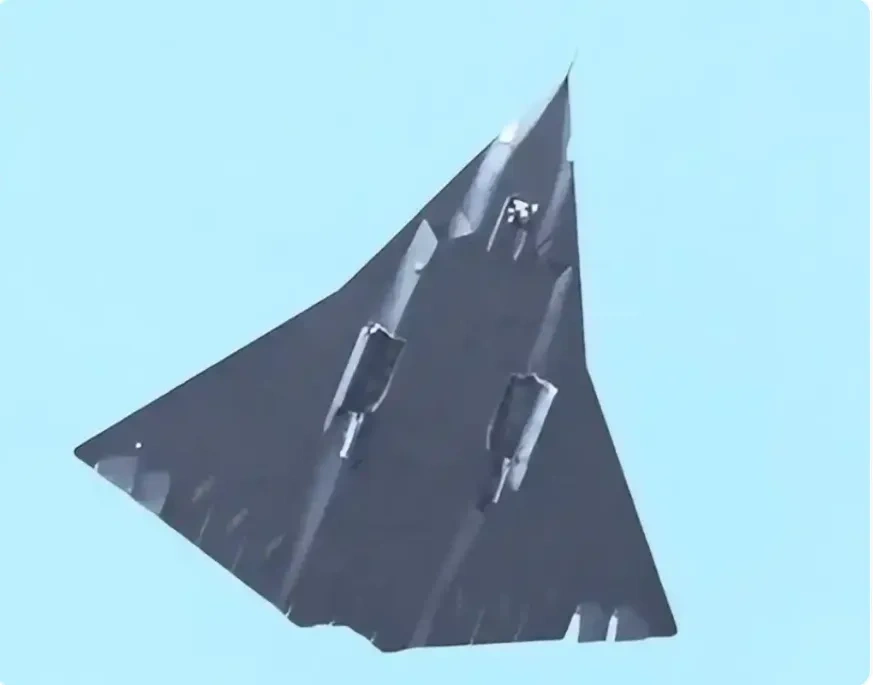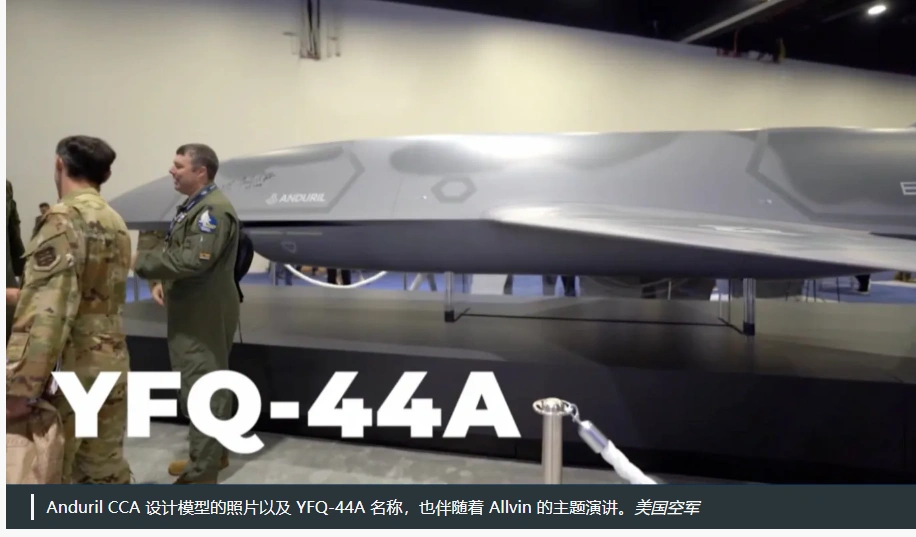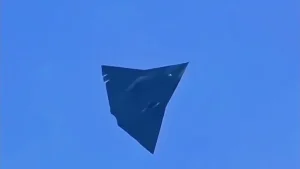The F-47 Fighter is A White Lie to Trump
On March 21st, President Trump personally announced the contract award to Boeing for the US Air Force’s sixth-generation aircraft, naming the project f47. This choice indeed surprised military enthusiasts worldwide, but upon closer inspection, it’s not entirely unreasonable.
The surprise stems from Boeing’s lackluster performance across various sectors in recent years. Design flaws in the 737 MAX series led to a global grounding, slow progress on the F15EX upgrade, frequent quality issues with the KC-46 tanker, and even significant delays in preparing the new Air Force One for President Trump.
To be frank, even extreme American supporters on Chinese social media have lost confidence in Boeing. Objectively speaking, Boeing’s experience in designing a fighter jet from scratch is not extensive. While the F15 and F18 are now under Boeing’s umbrella, they were originally McDonnell Douglas products. Boeing’s last completely new fighter jet design might trace back to the P26. In this scenario, American military enthusiasts’ optimism about Boeing’s F47 project is indeed limited.
 American military enthusiasts in China question Boeing’s capability to design and manufacture the F-47 fighter
American military enthusiasts in China question Boeing’s capability to design and manufacture the F-47 fighter
Looking back, in a country like the United States, defense procurement involving national security must consider political balance and alternatives. Boeing holds significant political influence, with Lockheed responsible for the F35, Northrop for the B21, and the future US Navy sixth-generation aircraft project. Supporting Boeing as a technological backup from a national security perspective isn’t entirely unreasonable given the political landscape, but its execution will be crucial. For instance, the backup plan for the International Space Station involved SpaceX’s Dragon and Boeing’s Starliner, with Boeing clearly mishandling its part.
Interestingly, the US Air Force’s NGAD sixth-generation aircraft was previously on hold. Statements from US Air Force leadership indicate that the pause was primarily due to the exorbitant cost of the planned sixth-generation aircraft, potentially exceeding $300 million per unit, a burden even for the well-funded US military. After China test-flew two sixth-generation aircraft, the US evidently felt compelled to act, leading to this wave of publicity.
Undoubtedly, the US remains advanced in many military technologies, but the release of the F47 primarily seems like a propaganda victory. Firstly, the name F47 pays tribute to Trump as the 47th president. Secondly, typically, the announcement of military choices is made by senior military officials, not the president, making Trump’s announcement unique. Thirdly, Trump emphasized that the validation aircraft flew in 2020, likely due to it being in his previous term. Lastly, Trump’s mention of hundreds of flight hours aims to showcase US superiority over China. However, given that it’s likely a technology validation aircraft compared to China’s aircraft in the engineering validation stage, the comparison is not very meaningful. Nonetheless, providing emotional value to the MAGA crowd seems to be a priority.

In conclusion, this release has once again allowed Trump to win, which is the most important outcome. As for the rumors circulating in the US, regarding potential behind-the-scenes dealings between Boeing and the Trump team, while the likelihood is significant, we lack evidence to delve further. A similar example is Trump’s mention of constructing a “Iron Dome” system in the US, inspired by Israel’s Iron Dome system, which left a profound impression on MAGA supporters. Trump’s announcement to build a similar system in the US disregards the unique realities of the US compared to Israel.
The propaganda victory of F47 this time reminds the author of another Trump-related event—the Artemis program to return to the moon. Towards the end of Trump’s previous term, believing in his easy re-election, he aggressively set 2024 as the target year for American astronauts to return to the moon, which would allow Trump to claim victory. However, this unrealistic timeline ultimately led to issues with the SLS rocket. Subsequently, SpaceX’s solution was chosen for the lunar lander, which, while appearing impressive and high-tech, may not be the most suitable option for the moon, highlighting issues with NASA’s procurement management joining SpaceX post-NASA.
Looking at today in 2025, these decisions don’t all seem based on science and reason, with similar issues resurfacing with the F47 project. From this perspective, it’s reasonable to maintain a cautious and pessimistic view of the F47 project.
Trump promised that F47 could be completed during his term and be cheaper than the F22. Currently, the likelihood of achieving this is slim, given the absence of even an engineering validation model. Boeing is unlikely to propose a significantly cheaper solution after the pause in the previous NGAD program. How they plan to achieve such cost efficiency with existing solutions remains uncertain.
Considering that fifth-generation aircraft are more expensive than fourth-generation ones, sixth-generation aircraft will likely be even pricier. Even though the cost control of the F35 is relatively good, it relies on large procurement quantities. The principles of economies of scale apply in military procurement, with the scale of sixth-generation aircraft likely being less than that of fifth-generation ones. Additionally, while Lockheed Martin produces the F35, Boeing’s cost control in recent years lacks positive examples. However, to keep Trump satisfied, these aspects may not be emphasized.


If we must mention Boeing’s advantages, it lies in their previous attempts and existing technological foundations. The US still holds advantages in many military supply chains, but does Boeing currently have the capability to integrate these elements effectively? Does Boeing lack the necessary technology? Clearly not. Boeing possesses numerous advanced technologies. An example is Boeing’s communication satellite platform, which boasts high levels of integration. Whether for US military communication satellites or commercial ones, this platform is widely used, showcasing Boeing’s technological prowess. However, recent issues with Boeing’s communication satellite platform satellites, including problems with the deployment of antennas on the world’s most powerful communication satellite, ViaSat-3, and power defects in the first six O3b mPower satellites utilizing Boeing’s platform, have arisen.
This is not a lack of technology but rather a problem with engineering capability. Engineering capability might not shine as brightly as advanced technology, but its importance is undeniable. Boeing, and the entire US industrial system, are facing significant instability in terms of engineering capability.


The more critical issue lies in the fact that military equipment is meant to face off against others directly. Can conservative solutions achieve this? That remains a question mark. While the delineation of fighter jet generations isn’t an absolute standard, it still signifies changes in air combat logic. From high-altitude high-speed to beyond visual range combat, and then to stealth aircraft combat, if the sixth-generation aircraft only upgrades some subsystems compared to traditional fifth-generation aircraft, can it truly be considered a generational leap? If the US military loses the authority in this regard, it would be a significant blow to the US.

Looking at the unique design of the Chengdu sixth-generation aircraft, even those unfamiliar with military matters can likely sense that this aircraft represents a new combat concept. For decades, advanced air combat concepts have been defined for the first time by a country outside the US.
While military equipment does require confrontational capabilities, since the Cold War, the US military has mostly faced weaker adversaries, lacking truly balanced confrontations. In such circumstances, mythologizing weapon systems and creating an image of invincibility for the US military are part of the US strategic deterrence. We’ve seen this play out repeatedly in conflicts like the Russia-Ukraine dispute, where any new equipment introduced by the US, even if not particularly powerful, is excessively praised online, contributing to the soft power of the US military.

While some equipment that China has surpassed may not be necessary for the US, fighter jets symbolizing air superiority remain a crucial part of the US military mythos. Therefore, after China test-flew sixth-generation aircraft, some officials in the US claimed the B21 is a sixth-generation aircraft—although the B21 is an excellent bomber and undoubtedly a component of future US air combat systems, labeling it as a fighter jet is quite amusing. This led to a Wikipedia war over the definition of sixth-generation aircraft, a classic Western people’s ideological victory.
The debate about canards is particularly interesting. Although many configurations of the F47 in the promotional video are unclear, it’s visible that there are canards in front of the main wings, also known as canard wings. The J20 also features canards. Western military enthusiasts and their counterparts in China have often ridiculed the J20’s canards, claiming they degrade stealth performance. Now, with the higher stealth requirements of sixth-generation aircraft, the US has incorporated canards into its design. How will they explain this reversal?
The impact of canards on stealth is quite a complex issue, not something military enthusiasts can judge visually. Quantitative analysis of this matter is highly specialized, and those Western military enthusiasts are merely deceiving themselves. However, it’s intriguing whether designs suitable for fifth-generation aircraft will be effective on sixth-generation aircraft, considering the heightened stealth requirements.
In reality, the US military also has more radical ideas for defining sixth-generation aircraft. For instance, after seeing China’s sixth-generation aircraft, Musk suggested the use of unmanned aircraft instead of manned ones. It’s certain that unmanned aircraft will play a significant role in the next generation of air combat systems, such as the US military’s CCA (Collaborative Combat Aircraft) program, which enhances manned fighter capabilities through unmanned aircraft collaboration.

Currently, there are two bidding projects with the codenames YFQ42A and YFQ44A. The first is a General Atomic project, while the second is from Peter Till’s unmanned drone company, Anduril. However, from the perspective of the US military, they also recognize that achieving complete unmanned combat aircraft still requires time. In Anduril’s various promotional videos, many are targeted towards China, reflecting the US military’s belief in unmanned systems, unmanned ships, and unmanned submarines to potentially outmatch China.

Undoubtedly, with the advancement of science and technology, the trend towards unmanned equipment is increasing. But why do Americans believe that in the field of unmanned drones, the US can overcome China with production capacity? The position China holds in the unmanned drone market is evident to anyone, making such American notions somewhat far-fetched.
Reflecting on the Cold War era when the US military equipment outpaced the Soviet Union, it’s often mentioned that the US achieved rapid technological progress by integrating civilian technologies with military applications. Today, China’s military technological advancement is based on the overall development of its industry, including the national emphasis on civil-military fusion—a step-by-step progress rather than a sudden leap.
The US’ engineering capability has moved from once leading globally to a more negative position. Due to various reasons, the US is losing its manufacturing capacity. While substantial investments and US protectionist policies maintain the US’s technological advancement in some areas, deficiencies in overall industrial capabilities cannot be rectified by isolated cases. When Musk and others advocate for cost reduction and efficiency improvement, criticizing military companies benefiting from government relations, it essentially means diverting significant investments to their own companies. The slogan of revitalizing the US manufacturing industry may only be believed by fervent MAGA supporters.
Even if the US military strength ceases to advance further, it can still maintain the facade of invincibility for a long time due to its massive existing resources and propaganda advantages. If the US were to relinquish its hegemony, it wouldn’t require as many advanced weapons to handle various situations. However, it’s regrettable to witness that despite Trump’s claims of strategic contraction, the US continues airstrikes in Yemen, provides extensive military aid to Israel, provokes South American countries, and engages in risky operations concerning Chinese sovereignty. The US still views its military might as an invincible tool, inevitably leading to current predicaments.

In the leaked White House chat records discussing the strike plan against the Houthis, the most popular element was the set of forceful attack emojis. Imperialism always believes its rule is eternal. However, the laws of reality tell us that nothing is eternally unchanging, and the most advanced technology is never the exclusive domain of any one nation. Such facts should be common knowledge, but for imperialists, it’s as horrifying as a Cthulhu Mythos—a regrettable reality in our world.
Editor: Leo Cai




Anonymous
Brilliant and amusing.
Best regards from the small sane part of Europe